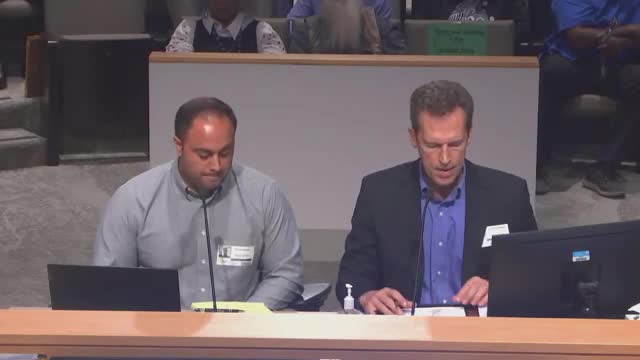Residents raise alarm over dust control in solar project
August 21, 2024 | San Bernardino County, California
This article was created by AI summarizing key points discussed. AI makes mistakes, so for full details and context, please refer to the video of the full meeting. Please report any errors so we can fix them. Report an error »

In a recent government meeting, concerns regarding dust control at a proposed solar facility in Newberry Springs took center stage. The appellant raised significant worries about dust emissions, particularly given the flat terrain of the site. Current engineering designs indicate minimal grading, with only about an acre of the 27-acre parcel requiring blading for drainage improvements, including a retention basin and berm.
County regulations mandate stringent dust control measures under AQMD Rule 403, which requires watering or other soil stabilization methods before, during, and after grading activities. These measures aim to mitigate any potential dust impacts, with assurances that the limited grading area will not lead to significant dust issues.
However, local residents voiced their skepticism during public comments. Paula Diehl, a long-time resident, highlighted the community's ongoing struggle with blowing dust and criticized the absence of a detailed dust mitigation plan in the project documentation. She argued that the proposed methods, such as watering and fencing, have proven ineffective in past solar developments, particularly in managing silica dust. Diehl emphasized the need for soil amendments, such as cow manure, to enhance moisture retention and prevent dust from becoming airborne.
Mike Matson, a community service director, raised additional concerns about the impact of the solar project on local wildlife, particularly native species like the desert tortoise. He pointed out that the project’s environmental assessments have not adequately addressed the presence of these species or their nesting sites, warning that overlooking these factors could lead to significant ecological consequences.
The meeting underscored the community's apprehensions about the proposed solar facility, particularly regarding dust control and environmental impacts, as residents called for more transparency and effective mitigation strategies.
County regulations mandate stringent dust control measures under AQMD Rule 403, which requires watering or other soil stabilization methods before, during, and after grading activities. These measures aim to mitigate any potential dust impacts, with assurances that the limited grading area will not lead to significant dust issues.
However, local residents voiced their skepticism during public comments. Paula Diehl, a long-time resident, highlighted the community's ongoing struggle with blowing dust and criticized the absence of a detailed dust mitigation plan in the project documentation. She argued that the proposed methods, such as watering and fencing, have proven ineffective in past solar developments, particularly in managing silica dust. Diehl emphasized the need for soil amendments, such as cow manure, to enhance moisture retention and prevent dust from becoming airborne.
Mike Matson, a community service director, raised additional concerns about the impact of the solar project on local wildlife, particularly native species like the desert tortoise. He pointed out that the project’s environmental assessments have not adequately addressed the presence of these species or their nesting sites, warning that overlooking these factors could lead to significant ecological consequences.
The meeting underscored the community's apprehensions about the proposed solar facility, particularly regarding dust control and environmental impacts, as residents called for more transparency and effective mitigation strategies.
View full meeting
This article is based on a recent meeting—watch the full video and explore the complete transcript for deeper insights into the discussion.
View full meeting
